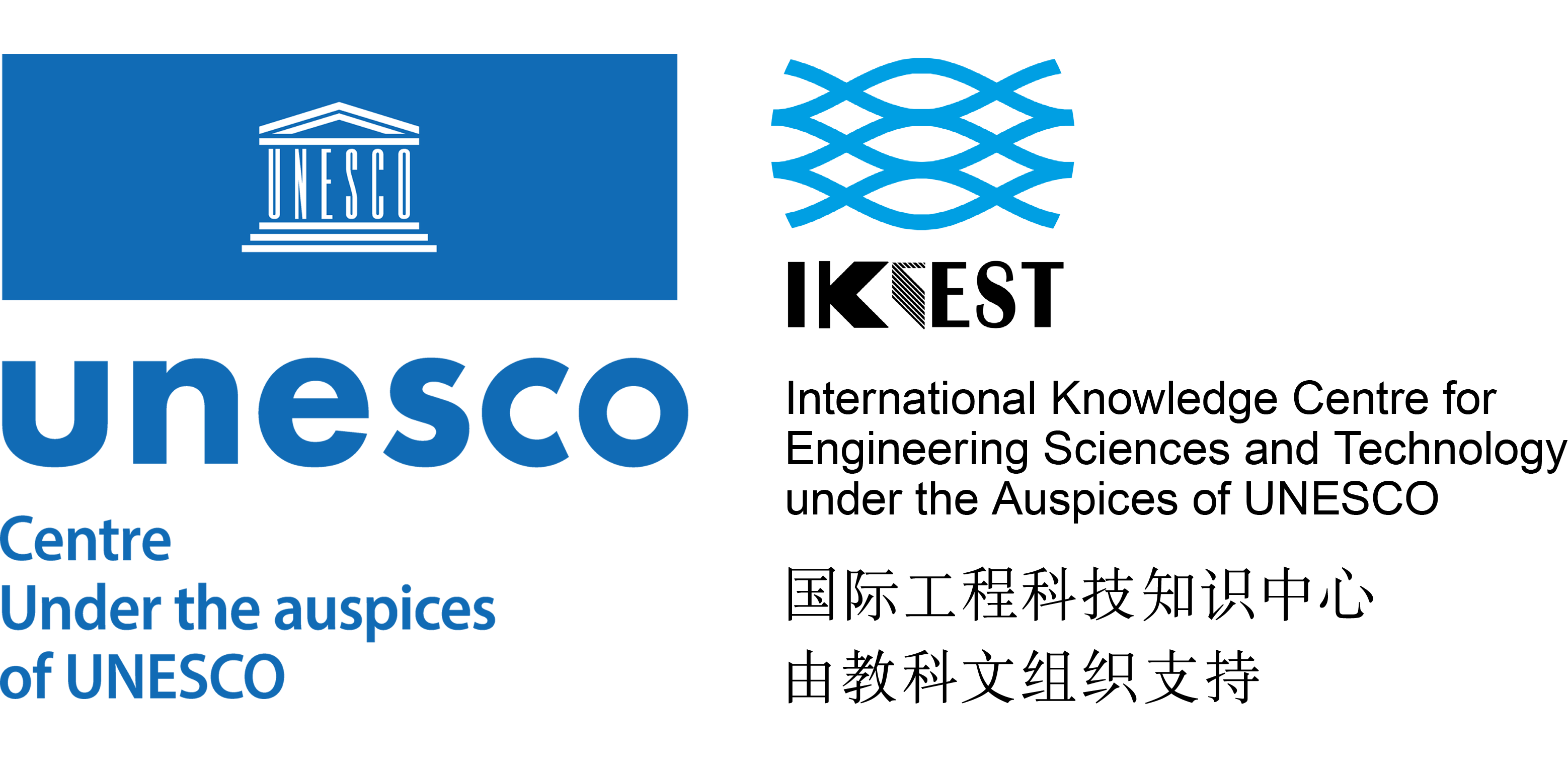Language
We detect your regional language is French. Do you want to change site's language to French? You may choose other languages.International
 English
English
 中文
中文
 русск
русск
 français
français
 español
español
 العربية
العربية

- Home
- Symposiums
- The 5th GIS Software Technology Conference
- Webinar on Society 5.0
- IKCEST holds the 8th International Disaster Prevention and Reduction Knowledge Service Seminar
- The 9th International Disaster Prevention and Reduction Knowledge Service Seminar
- The 2022 Newmark Distinguished Lecture
- IKCEST International Symposium 2019
- IKCEST International Symposium 2018
- IKCEST International Symposium 2017
- IKCEST International Symposium 2016
- IKCEST International Symposium 2015
- China-Ukraine Workshop on Resources Classification: Status, Mapping and Application
- UNESCO Science Centres Coordination Meeting
- All Symposium
- Training Workshops
- The 2019 International Workshop of IKCEST Intelligent City Knowledge Service held in Shanghai
- International Training Workshop on Disaster Risk Reduction Knowledge Service in China-Pakistan Economic Corridor
- IKCEST and ISTIC jointly held the Online Training Workshop on Big Data
- TRAINING OF TRAINERS on Data Stewardship for Open Science 2021
- IKCEST-DRR Team Successfully Held the International Training Workshop
- The Belt and Road Initiative International Training Course on Resources, Environment, Scientific Data Sharing and Disaster Prevention and Reduction Knowledge Services
- Program of the Training Workshop On Resource & Environment Scientific Data Sharing and Disaster Emergency Response along CPEC
- International Training Workshop on Big Data for Developing Countries 2019
- The International Training on Resource & Environment Scientific Data Sharing along the “Belt and Road”
- IKCEST - ISTIC 2018 Big Data Training Workshop
- 2019 IKCEST & ICEE International Engineering Education Training Workshop held successfully at Tsinghua University
- The International Training Workshop on Resource & Environment Scientific Data Sharing and Disaster Risk Reduction Knowledge Service
- All Training Workshops
- Competitions
- The 7th IKCEST The Belt and Road International Big Data Competition
- The 6th IKCEST The Belt and Road International Big Data Competition
- The 5th IKCEST The Belt and Road International Big Data Competition
- The 4th IKCEST The Belt and Road International Big Data Competition
- The 3rd IKCEST The Belt and Road International Big Data Competition
- Datasets
- Knowledge Apps
- Knowledge Services
- Videos
- Newsletters
- About IKCEST
Location:Home >>/scienceEducation/se_list.htm >> Ikcest Mooc >> Electrical Engineering
Ikcest Mooc
Related courses

Will China Rise as a Disruptive Force? The Insiders' Perspective
Week 1 China's World View The World's Number Two: more intriguing than those in history Lecture Video The Chinese Model: what has China done right, so far? Lecture Video Mounting Challenges for The Future Lecture Video China's World View Lecture Video Is the World Ready for an Ever Bigger China? Lecture Video Supplementary Materials Reading Material for Week One Course Structure of CHAPTER 1 : China's World View Home Assignment 1 Single Choices Home Assignment 2 Single Choices Week 2 The Dialectics of Autonomy and Opening Two Singularities Lecture Video Dependence & Independence Lecture Video Historical Roots: Some Political Experience Lecture Video Historical Roots: Peasantry Lecture Video Historical Roots: The State Lecture Video The Great Transformation Lecture Video Dialogue Between Insiders Lecture Video Supplementary Materials Reading Materials Home Assignment 3 Single Choices Home Assignment 4 Single Choices Week 3: China's Foreign Policy Main factors influencing foreign policy making Lecture Video Reform Lecture Video Fundamental Changes of Foreign Policy from Keeping Low Profile to Striving for Achievements Lecture Video Determining Factors of China Foreign Policy Lecture Video Prof. Yan's Perspective on China Foreign Policy Issues Lecture Video Questions and Answers Lecture Video Home Assignment 5 Single Choice Questions Home Assignment 6 Single Choices Questions Final Question 1 Question for Week 1 Question 1 (updated setting) Question for Week 1 Question 2 Question for Week 2 Question 3 Question for Week 3
Management Science

Writing, Presenting and Submitting Scientific Papers in English
Chapter 1 Writing papers in English 1.1 Preparing Manuscripts 1.1 1.2 Submission 1.2 1.3 Examples 1.3 1.4 Summary 1.4 Chapter 2 Making Presentations in English 2.1 General Advice 2.1 2.2 Preparing Slides 2.2 2.3 Making Presentation 2.3 2.4 Summary Chapter 3 Taking Part in Academic Community 3.1 Academic Credit 3.1 3.2 Academic Participation 3.2 3.3 Academic Services 3.3 Chapter 4 Experiences and Advices on Scientific Research 4.1 Choosing research topics 4.1 4.2 Applying for research funding 4.2
Linguistics

Circuits and Electronics Ⅲ
Overview Welcome to 6.002x Using the Tools Using the Tools Circuit Sandbox Math Review First Order Differential Equations First order Diffeq Second Order Differential Equations 2nd order diffeq Complex Numbers Complex Arithmetic Complex Geometry POLAR COORDINATES, PART 1 POLAR COORDINATES, PART 2 Euler's Formula inverse euler COMPLEX EXPNENTIALS COMPLEX REPLACEMENT COMPLEX ROOTS, PART 1 COMPLEX ROOTS, PART 2 Calculus at Length Calculus Entrance Survey Entrance Survey edX Survey Your Aspirations Your Attitudes Educational Background Social Learning General Questions Week 9 Undamped Second-Order Systems Damped Second-Order Systems Homework 9 Homework 9 Lab 9 Lab 9 Week 10 Sinusoidal Steady State The Impedance Model RC Filters Experiment Homework 10 Homework 10 Lab 10 Lab 10 Week 11 Filters Time Domain Versus Frequency Domain Analysis Week 11 Tutorials Homework 11 Homework 11 Lab 11 Lab 11 A&L Problem 13.4 Week 12 The Operational Amplifier Abstraction Operational Amplifier Circuits Week 12 Tutorials Homework 12 Homework 12 Lab 12 Lab 12 Week 13 Op Amps Positive Feedback Energy and Power Week 13 Tutorials wk13_solder wk13_FreqResp wk13_FreqResp Week 14 Energy and CMOS Design Breaking the Abstraction Barrier Final Exam Fall 2013 Final Final Info Final Problems
Electrical Engineering

Circuits and Electronics Ⅱ
Overview Welcome to 6.002x Using the Tools Using the Tools Circuit Sandbox Math Review First Order Differential Equations First order Diffeq Second Order Differential Equations 2nd order diffeq Complex Numbers Complex Arithmetic Complex Geometry POLAR COORDINATES, PART 1 POLAR COORDINATES, PART 2 Euler's Formula inverse euler COMPLEX EXPNENTIALS COMPLEX REPLACEMENT COMPLEX ROOTS, PART 1 COMPLEX ROOTS, PART 2 Calculus at Length Calculus Entrance Survey Entrance Survey edX Survey Your Aspirations Your Attitudes Educational Background Social Learning General Questions Week 5 MOSFETs: Large Signals MOSFET Amplifiers: Small signal model Mosfet Amplifier Experiment Week 5 Tutorials Op Amp Small Signal Model Op Amp Small Signal Model Op Amp Small Signal Model Op Amp Small Signal Model Homework 5 Homework 5 Lab 5 Lab 5 Op Amp Small Signal Model bjt small signal model problem statement part 1 part 2 part 3 part 4 part 5 part 6 Large signal analysis of MOSFET amplifier Large signal analysis of MOSFET amplifier with source degeneration Transistor biasing with feedback Diode-connected MOSFET Week 6 Small-Signal Circuit Models Capacitors and First-Order Circuits Current Mirror Exercise Homework 6 Homework 6 Lab 6 Lab 6 Basic model of the MOSFET Parallel-plate Capacitor (A&L 9.7) Week 7 Inductors and First-Order Circuits Speed of Digital Circuits Homework 7 Homework 7 Lab 7 Lab 7 Geometry and Capacitance/Inductance (A&L 9.3) Constitutive Laws for Capacitors and Inductors (A&L 9.6) Unknown Capacitance (A&L 9.1) Unknown Inductance (A&L 9.2) Time-varying Capacitance (A&L 9.5) Types of Capacitors Midterm Exam Fall 2013 Midterm midterm info midterm problems Week 8 Ramps, Steps, and Impulses State and Memory Week 8 Tutorials Homework 8 Homework 8 Lab 8 Lab 8
Electrical Engineering

 User Center
User Center My Training Class
My Training Class Feedback
Feedback







Circuits and Electronics Ⅲ Anant Agarwal
The course introduces engineering in the context of the lumped circuit abstraction. Topics covered include: resistive elements and networks; independent and dependent sources; switches and MOS transistors; digital abstraction; amplifiers; energy storage elements; dynamics of first- and second-order networks; design in the time and frequency domains; and analog and digital circuits and applications. Design and lab exercises are also significant components of the course. The course is organized by weeks. To keep pace with the class, you are expected to complete all the work by the due dates indicated. Homeworks and labs must be completed by the Sunday of the week following the one in which they are posted. Weekly coursework includes interactive video sequences, readings from the textbook, homework, online laboratories, and optional tutorials. The course will also have a midterm exam and a final exam. Those who successfully earn enough points will receive an honor code certificate from MITx.
INTERACTIVE SECTION
All Comments